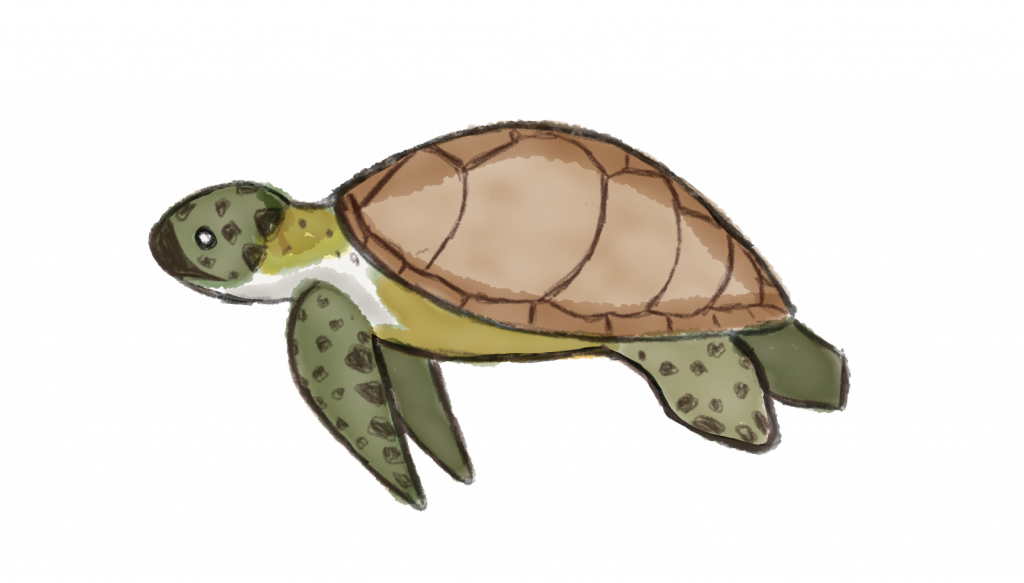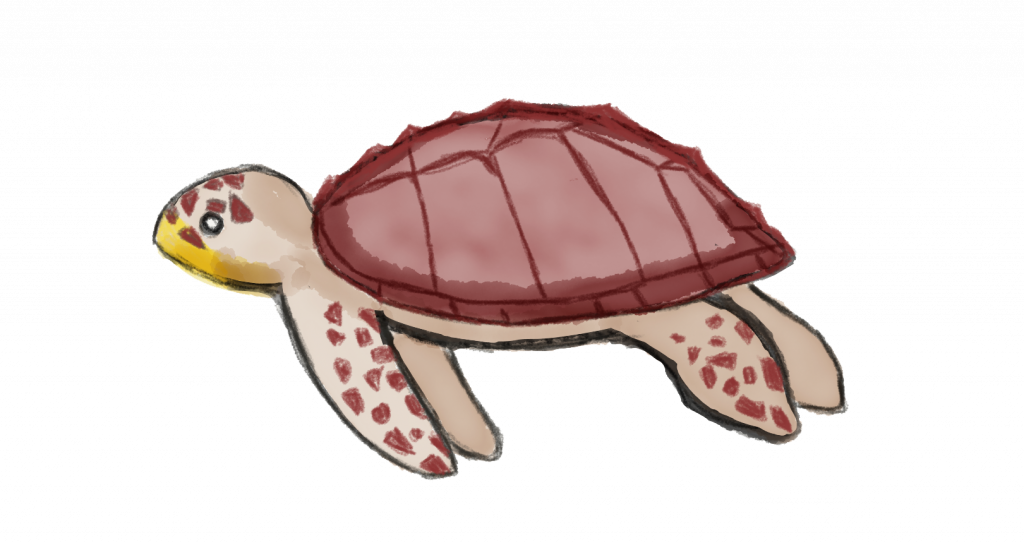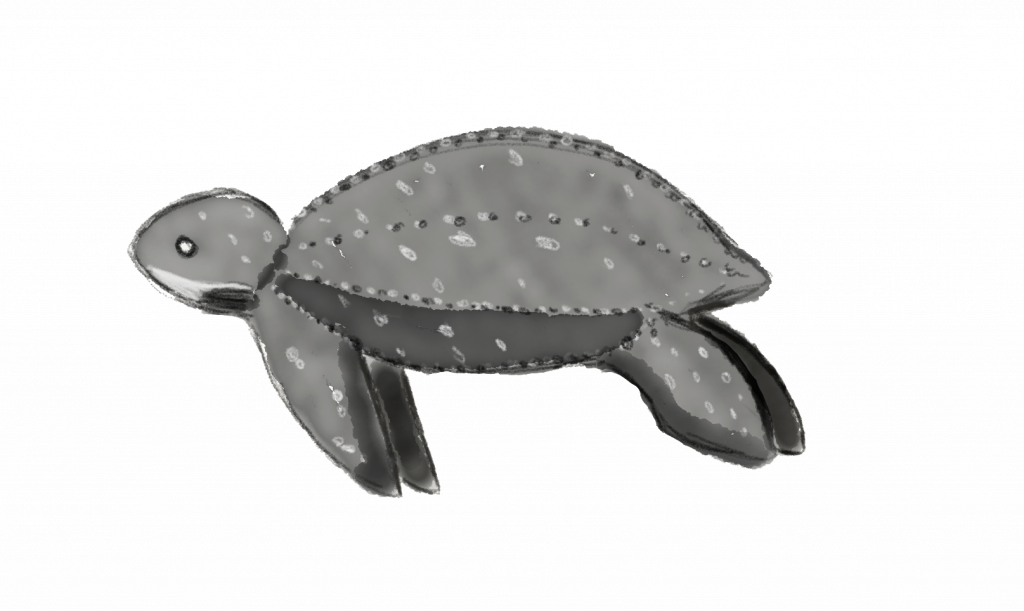
GREEN TURTLE
Chelonia mydas
LOGGERHEAD
Caretta caretta
LEATHERBACK
Dermochelys coriacea
Green Sea Turtle
Green sea turtles are easily recognized by their unique pair of scales in front of the eyes, unlike other sea turtles. They possess a small and blunt head with a serrated jaw. Their shells are oval with varying shades of pale to dark green, with some plain to brilliant yellow, brown and green with striped patterns. Hatchlings emerge as dark olive green or nearly black with a contrasting white underbelly.
SIZE: Adults are 3.5 - 4 feet long, weighing between 300 - 400 pounds.
NESTING: Preferring warm, sandy beaches for nesting, each female nests 3 - 5 times every other year with an average of 115 eggs per nest. The eggs take about 60 days to incubate.
STATUS: Endangered – This species is in danger of extinction, making their conservation crucial.
Loggerhead Sea Turtle
Loggerheads are known for their distinctive large heads with strong, heavy jaws and heart-shaped, ridgeless shells. Their shell color is known to be reddish-brown with a yellowish-brown underbelly. Hatchlings are typically dark brown with a pale brown border on their flippers.
SIZE: Adults are 2.5 - 3.5 feet in length, weighing up to 350 pounds.
NESTING: Loggerheads are the most common nesting species in Florida. Each female nests 5 to 7 times every 2-3 years, laying an average of 80-120 eggs per nest. The eggs take about 55 days to incubate.
STATUS: Threatened: This species is likely to become in danger of extinction within the foreseeable future.
Leatherback Sea Turtle
As giants among turtles, Leatherbacks are extraordinary. They are the only sea turtles without a bony outer shell. Adults are primarily black with a pinkish-white mottled laterally ridged shell and have a pale white and pink spotting on the head. The hatchlings are about 3-4 inches in length have white striping along their backs
SIZE: Adults reach an impressive 6- 6.5 feet in length and weigh about 1500-2000 pounds, roughly equivalent to a small car.
NESTING: Each female nests multiple times during a season and lays an average of 80-100 eggs in each nest. Eggs incubate in about 70 days.
STATUS: Endangered – This species is in danger of extinction, making their conservation crucial.



